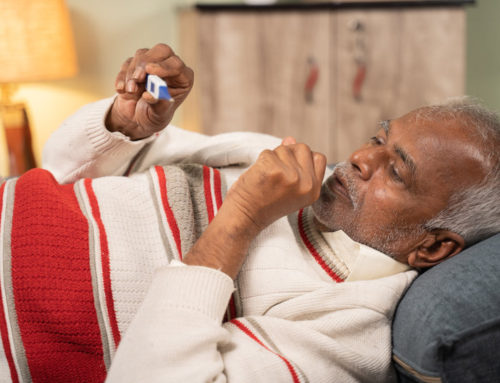Share This Story!
Steps To Prevent Diabetes As You Age
Diabetes affects almost 10% of the US population. In adults aged 65 and older, over 23 million have prediabetes, a period of time where someone has high blood sugar. However, prediabetes does not have to turn into diabetes. Here are 3 steps seniors can take to reduce risk.
1. Lose weight
Maintaining healthy body weight is key to diabetes prevention. Losing just 5-10% of body weight can decrease diabetes risk. And the benefits increase with more weight loss. Specifically, decreasing weight around the midsection has been linked to decreased diabetes risk.
Getting regular exercise comes hand-in-hand with losing weight. One study found that moderate-intensity exercise increased insulin sensitivity by 51%. And more intense exercise increased sensitivity by 85%. For many seniors, intense exercise may mean walking at a brisk pace. The goal should be to increase the heart rate, even while performing low-impact activities such as walking, swimming, or biking.
2. Stop smoking
Smoking has been linked to many health conditions, diabetes just being one. In one analysis of multiple studies, smoking was shown to increase diabetes risk by 44% in moderate smokers and 61% in people who smoked more than 20 cigarettes per day. In another study, men who quit smoking reduced diabetes risk by 13% over 5 years. After 20 years, these men had the same risk of diabetes as those who had never smoked.
Some seniors may think that after smoking for many years, quitting isn’t worth the effort. However, the health benefits of quitting smoking begin as soon as a person quits. Tobacco use is the single largest modifiable risk factor for many diseases. A mere 12 hours after a person’s last cigarette, carbon monoxide levels in the blood return to normal. Over the next few hours, weeks, and years, the health benefits only continue to increase.
3. Cut back on refined sugars
Eating foods that are high in refined carbs and sugars has been shown to increase insulin levels, which can lead to diabetes. For people with prediabetes, cutting back on refined sugars is key. In a large analysis of many studies, researchers found that people who had a high intake of refined carbs were 40% more likely to develop diabetes.
Seniors should focus on getting enough protein, vegetables, and whole grains. Cutting out processed foods can help significantly in reducing diabetes risk and improving diet. Additionally, eating smaller meals more frequently can be more beneficial for blood sugar levels than eating large portions less often.
Take charge of your health
While age is a risk factor for diabetes, getting older does not have to mean a person will develop diabetes. Taking essential steps such as losing weight, quitting smoking, and improving diet can all help to decrease a person’s risk.





